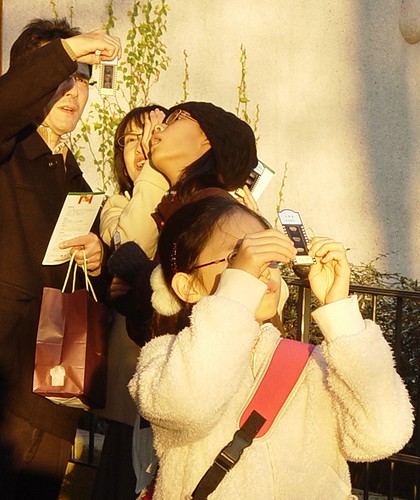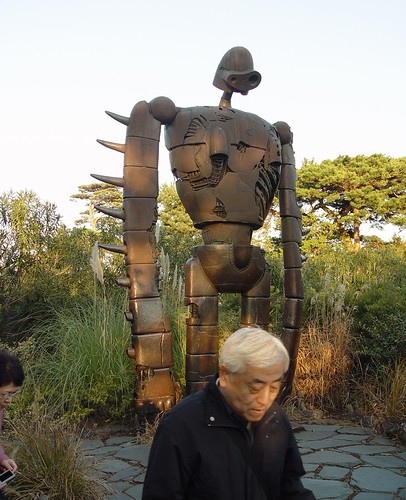"Never-Ending Man: Hayao Miyazaki" in theaters Dec. 13 & 18, 2018
by Gregg Chadwick
"The single difference between films for children and films for adults is that in films for children, there is always the option to start again, to create a new beginning. In films for adults, there are no ways to change things." -Hayao Miyazaki*
Gkids is bringing a new documentary on Hayao Miyazaki to theaters in the United States this month and I have been thinking about how inspirational Miyazaki has been to artists all over the world. Pixar animator Enrico Casarosa said, "Miyazaki has this uncanny ability to add a childish sense of wonder to his stories. He’s able to make us feel like little kids again."
Miyazaki is careful to steer his work towards child-like wonder and away from childishness. Instead, Miyazaki's films have three main themes:
1. A distaste for heedless violence and warmongering.
2. Concern for the environment and a depiction of natural beauty as a counterweight to our increasingly industrialized world.
3. Strong, brave, and resourceful main female characters.
On the occasion of Miyazaki's film retrospective at the Museum of Modern Art in New York in 2005, AO Scott wrote that after viewing Miyazaki's films "you may find your perception of your own world refreshed, as it might be by a similarly intensive immersion in the oeuvre of Ansel Adams, J. M. W. Turner or Monet. After a while, certain vistas - a rolling meadow dappled with flowers and shadowed by high cumulus clouds, a range of rocky foothills rising toward snow-capped peaks, the fading light at the edge of a forest - deserve to be called Miyazakian."


In December 2010, I was fortunate to visit the Ghibli Museum in Mitaka, Japan where I learned much about Miyazaki and his art. Filmmakers Hayao Miyazaki and Isao Takahata founded their animation studio in 1985 and named it after an Italian airplane first produced before World War II: the Caproni Ca.309 Ghibli. The word ghibli in Italian refers to the hot dry winds that blow across the Sahara desert.



Hayao Miyazaki was born on January 5, 1941 just months before Pearl Harbor and the brutal battles in the Pacific Theatre of World War II. As a small child growing up in greater Tokyo, Miyazaki drew scenes of aircraft and aviation most likely inspired by his father's family business which built airplane parts for Japanese Zero fighter planes and also in the later years of the war, by his remembrances of the waves of Allied bombers which firebombed much of Tokyo into smoldering ruins.


*(late December 2001, from a ceremony at "Spirited Away's" first European screening during the animation festival Nouvelles images du Japon where the French government bestowed on Miyazaki the title of 'Officier des Arts et des Lettres')
Much more at:
Studio Ghibli Website
Studio Ghibli Latest News from Nausicaa.net
Studio Ghibli Information Site (In French and excellent!)
"The single difference between films for children and films for adults is that in films for children, there is always the option to start again, to create a new beginning. In films for adults, there are no ways to change things." -Hayao Miyazaki*
Gkids is bringing a new documentary on Hayao Miyazaki to theaters in the United States this month and I have been thinking about how inspirational Miyazaki has been to artists all over the world. Pixar animator Enrico Casarosa said, "Miyazaki has this uncanny ability to add a childish sense of wonder to his stories. He’s able to make us feel like little kids again."
Miyazaki is careful to steer his work towards child-like wonder and away from childishness. Instead, Miyazaki's films have three main themes:
1. A distaste for heedless violence and warmongering.
2. Concern for the environment and a depiction of natural beauty as a counterweight to our increasingly industrialized world.
3. Strong, brave, and resourceful main female characters.
On the occasion of Miyazaki's film retrospective at the Museum of Modern Art in New York in 2005, AO Scott wrote that after viewing Miyazaki's films "you may find your perception of your own world refreshed, as it might be by a similarly intensive immersion in the oeuvre of Ansel Adams, J. M. W. Turner or Monet. After a while, certain vistas - a rolling meadow dappled with flowers and shadowed by high cumulus clouds, a range of rocky foothills rising toward snow-capped peaks, the fading light at the edge of a forest - deserve to be called Miyazakian."

Hayao Miyazaki at 22
(Courtesy NTV)
 |
| Hayao Miyazaki's tenacious spirit, imagination, and work-ethic allowed him to rise from entry-level animator to the co-founder of his own company. Never-Ending Man: Hayao Miyazaki in theaters Dec. 13 & 18, 2018 Tickets: http://GKIDS.com/NeverEndingMan |

Hayao Miyazaki
Sketch for My Neighbor Totoro (Tonari no Totoro)
pencil and watercolor on paper 1988
(Ghibli Museum, Mitaka, Japan)
In December 2010, I was fortunate to visit the Ghibli Museum in Mitaka, Japan where I learned much about Miyazaki and his art. Filmmakers Hayao Miyazaki and Isao Takahata founded their animation studio in 1985 and named it after an Italian airplane first produced before World War II: the Caproni Ca.309 Ghibli. The word ghibli in Italian refers to the hot dry winds that blow across the Sahara desert.

Caproni Ca.309 "Ghibli" In North Africa during WWII


Hayao Miyazaki
Sketches for Porco Rosso (Kurenai no buta)
pencil and watercolor on paper 1992
(Ghibli Museum, Mitaka, Japan)
Hayao Miyazaki was born on January 5, 1941 just months before Pearl Harbor and the brutal battles in the Pacific Theatre of World War II. As a small child growing up in greater Tokyo, Miyazaki drew scenes of aircraft and aviation most likely inspired by his father's family business which built airplane parts for Japanese Zero fighter planes and also in the later years of the war, by his remembrances of the waves of Allied bombers which firebombed much of Tokyo into smoldering ruins.

Still from Grave of the Fireflies ((Hotaru no Haka)) 1988
Created by Studio Ghibli. Directed by Isao Takahata.

Hayao Miyazaki
Sketch for Porco Rosso (Kurenai no buta)
pencil and watercolor on paper 1992
(Ghibli Museum, Mitaka, Japan)
Hayao Miyazaki
Sketch for Spirited Away (Sen to Chihiro no Kamikakushi)
pencil and watercolor on paper 2001
(Ghibli Museum, Mitaka, Japan)
Celluloid Dreams at the Ghibli Museum, Mitaka, Japan
photo by Gregg Chadwick
*(late December 2001, from a ceremony at "Spirited Away's" first European screening during the animation festival Nouvelles images du Japon where the French government bestowed on Miyazaki the title of 'Officier des Arts et des Lettres')
Studio Ghibli Website
Studio Ghibli Latest News from Nausicaa.net
Studio Ghibli Information Site (In French and excellent!)
Robot From Castle in the Sky (Laputa) at Ghibli Museum






Comments